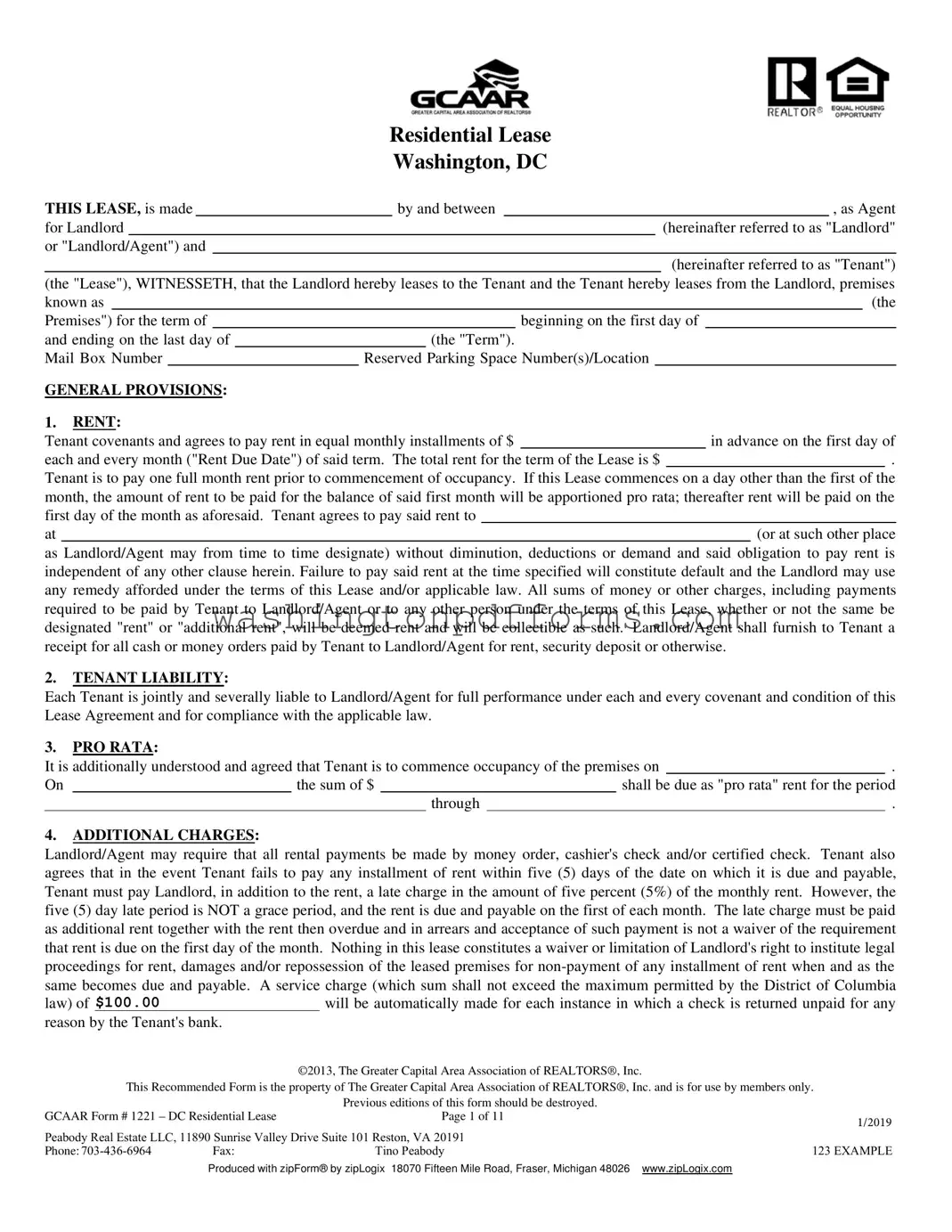Filling out the Washington DC Residential Lease Agreement form can be a straightforward process, but there are common mistakes that individuals often make. One frequent error is leaving out important personal information. When identifying the parties involved, both the Landlord and Tenant must provide complete names and contact details. Omitting this information can lead to confusion or disputes later on.
Another common mistake is failing to specify the rental amount clearly. The agreement should state the exact monthly rent and any additional fees. If this section is incomplete or unclear, it can create misunderstandings about payment obligations. Additionally, tenants should be careful to note the due date for rent payments. Missing this detail can lead to late fees or even eviction notices.
Many people overlook the importance of the security deposit section. It is crucial to specify the amount of the security deposit and understand how it will be handled. This includes knowing that the deposit cannot be used to cover rent and must be returned within the stipulated time frame after the lease ends. Not paying attention to these details can result in financial loss.
Another mistake involves the pro rata rent calculation. If the lease starts on a day other than the first of the month, tenants must ensure they understand how much rent is owed for that initial period. Failing to calculate this correctly can lead to either underpayment or overpayment, both of which can complicate the rental relationship.
Additionally, tenants often neglect to review the late payment clause. Understanding the implications of late fees is essential. If rent is not paid on time, a late fee may be incurred. This fee is not a grace period; it is an additional charge that must be paid alongside the overdue rent.
Another frequent oversight is not reading the terms regarding possession. If the Landlord cannot provide possession of the property at the start of the lease, tenants should know their rights regarding rent payments during that period. Misunderstanding this clause can lead to unexpected financial obligations.
Moreover, tenants sometimes fail to acknowledge the implications of joint liability. If there are multiple tenants, each one is jointly responsible for the lease terms. This means that if one tenant fails to pay rent, the others may be held accountable. Understanding this shared responsibility is crucial to avoid disputes among roommates.
Finally, many individuals forget to ask questions or seek clarification on any unclear terms. It is vital to fully understand the lease agreement before signing. Taking the time to address any uncertainties can prevent issues down the line and ensure a smoother rental experience.
